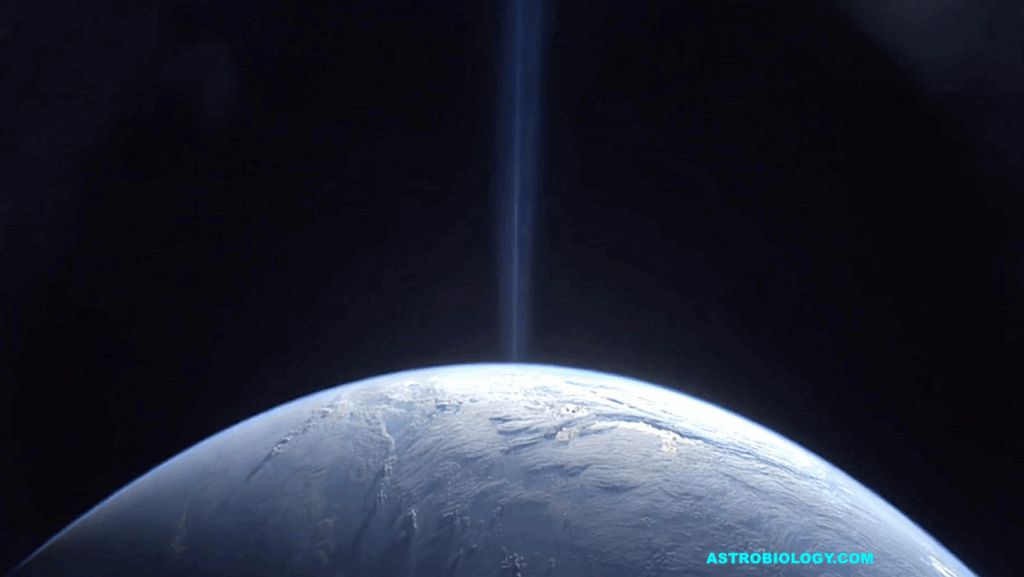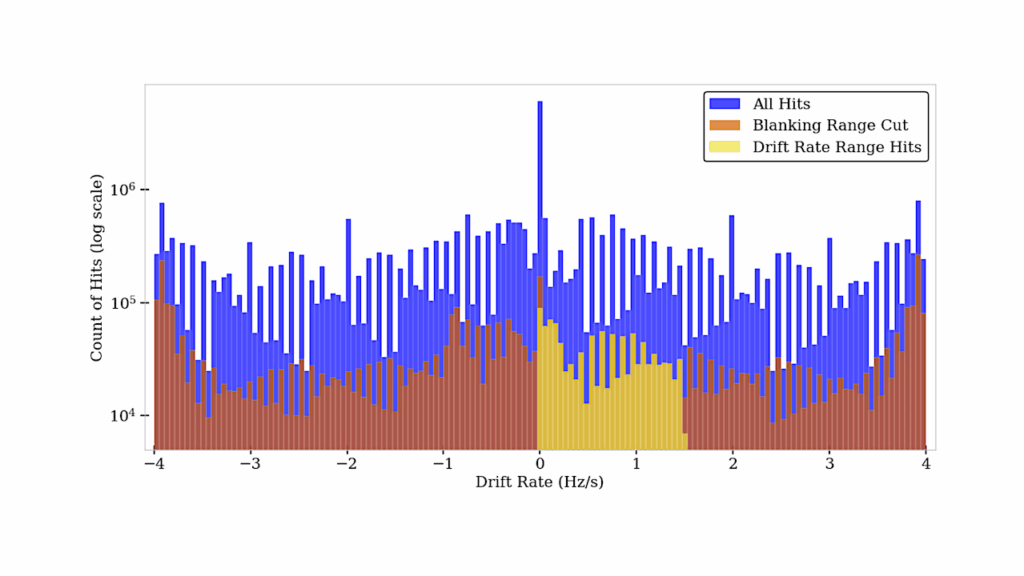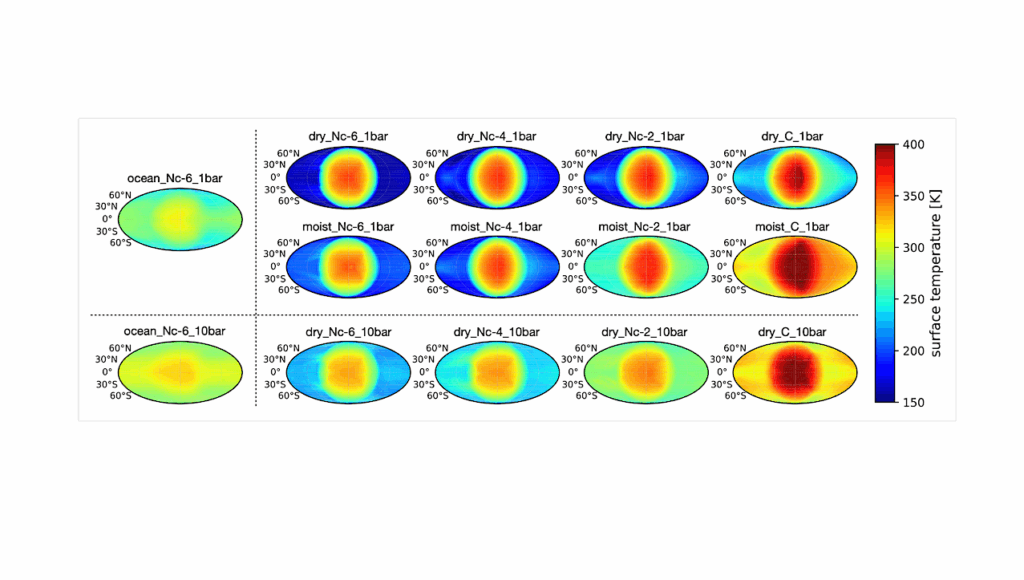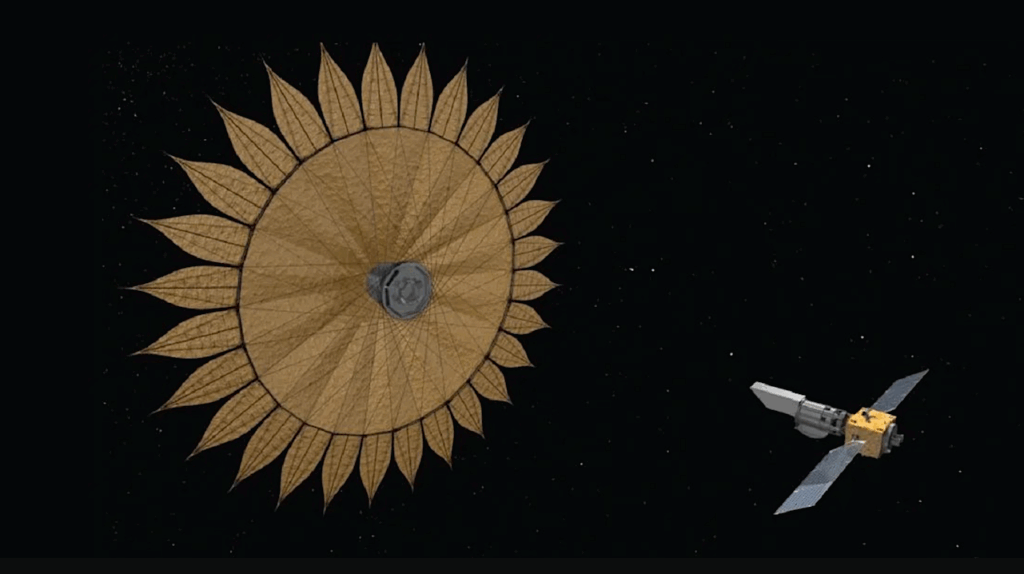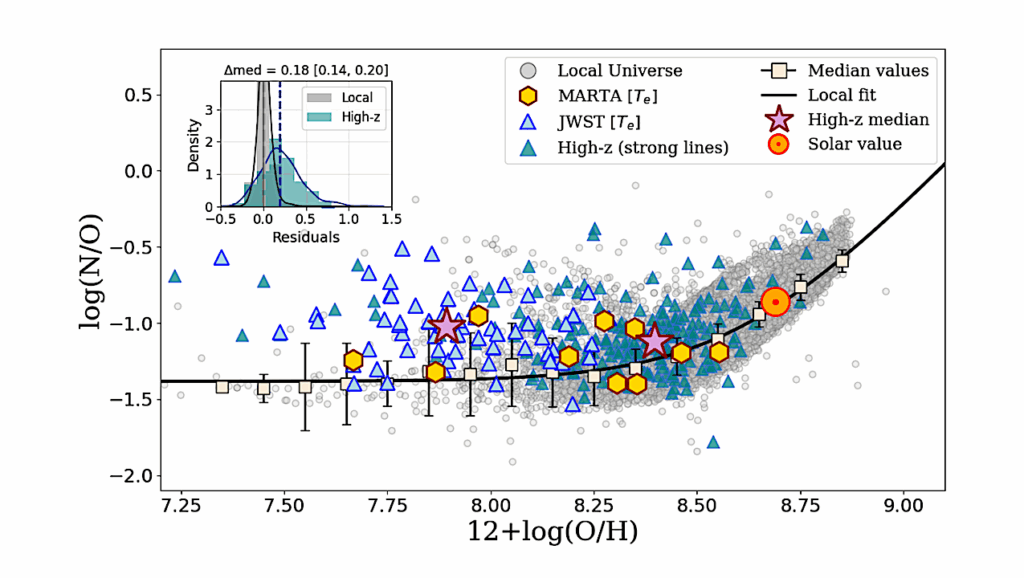TOI-2374 b and TOI-3071 b: Two Metal-rich Sub-Saturns Well Within The Neptunian Desert
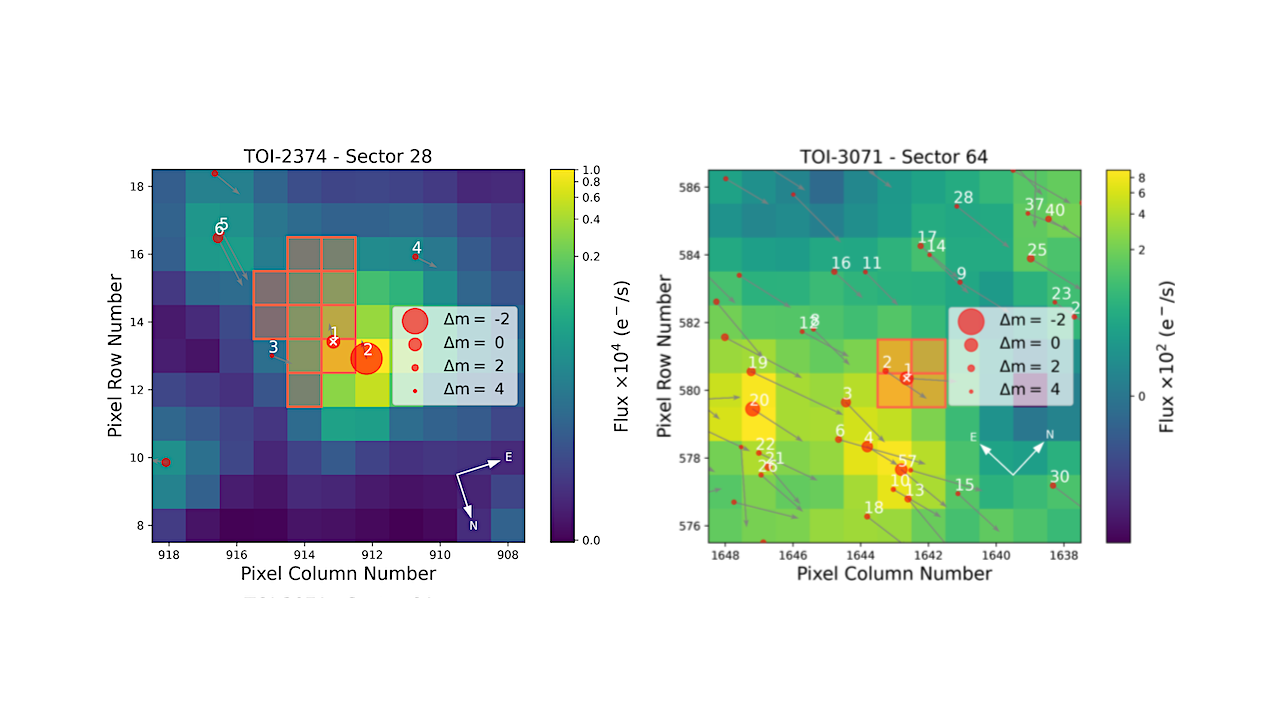
We report the discovery of two transiting planets detected by the Transiting Exoplanet Survey Satellite (TESS), TOI-2374 b and TOI-3071 b, orbiting a K5V and an F8V star, respectively, with periods of 4.31 and 1.27 days, respectively.
We confirm and characterize these two planets with a variety of ground-based and follow-up observations, including photometry, precise radial velocity monitoring and high-resolution imaging. The planetary and orbital parameters were derived from a joint analysis of the radial velocities and photometric data. We found that the two planets have masses of (57±4) M⊕ or (0.18±0.01) MJ, and (68±4) M⊕ or (0.21±0.01) MJ, respectively, and they have radii of (6.8±0.3) R⊕ or (0.61±0.03) RJ and (7.2±0.5) R⊕ or (0.64±0.05) RJ, respectively.
These parameters correspond to sub-Saturns within the Neptunian desert, both planets being hot and highly irradiated, with Teq≈745 K and Teq≈1812 K, respectively, assuming a Bond albedo of 0.5. TOI-3071 b has the hottest equilibrium temperature of all known planets with masses between 10 and 300 M⊕ and radii less than 1.5 RJ.
By applying gas giant evolution models we found that both planets, especially TOI-3071 b, are very metal-rich. This challenges standard formation models which generally predict lower heavy-element masses for planets with similar characteristics.
We studied the evolution of the planets’ atmospheres under photoevaporation and concluded that both are stable against evaporation due to their large masses and likely high metallicities in their gaseous envelopes.
Alejandro Hacker, Rodrigo F. Díaz, David J. Armstrong, Jorge Fernández Fernández, Simon Müller, Elisa Delgado-Mena, Sérgio G. Sousa, Vardan Adibekyan, Keivan G. Stassun, Karen A. Collins, Samuel W. Yee, Daniel Bayliss, Allyson Bieryla, François Bouchy, R. Paul Butler, Jeffrey D. Crane, Xavier Dumusque, Joel D. Hartman, Ravit Helled, Jon Jenkins, Marcelo Aron F. Keniger, Hannah Lewis, Jorge Lillo-Box, Michael B. Lund, Louise D. Nielsen, Ares Osborn, David Osip, Martin Paegert, Don J. Radford, Nuno C. Santos, Sara Seager, Stephen A. Shectman, Gregor Srdoc, Paul A. Strøm, Thiam-Guan Tan, Johanna K. Teske, Michael Vezie, David Watanabe, Cristilyn N. Watkins, Peter J. Wheatley, Joshua N. Winn, Bill Wohler, Carl Ziegler
Comments: 24 pages, 22 figures, 10 tables, accepted for publication in MNRAS
Subjects: Earth and Planetary Astrophysics (astro-ph.EP)
Cite as: arXiv:2406.12996 [astro-ph.EP] (or arXiv:2406.12996v1 [astro-ph.EP] for this version)
Submission history
From: Alejandro Hacker
[v1] Tue, 18 Jun 2024 18:35:47 UTC (4,126 KB)
https://arxiv.org/abs/2406.12996
Astrobiology


